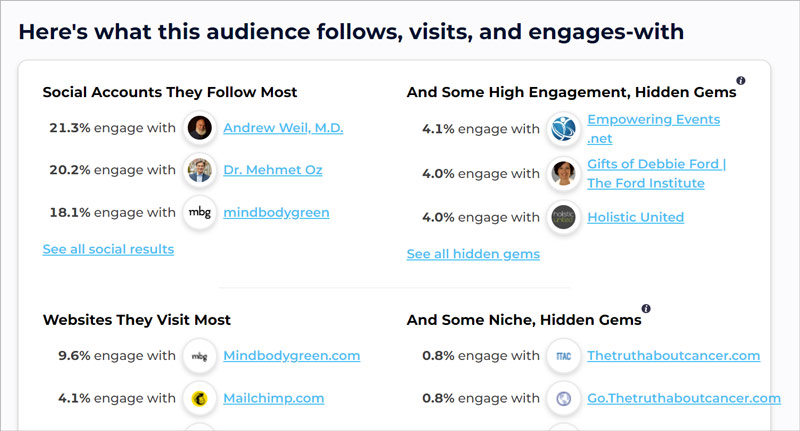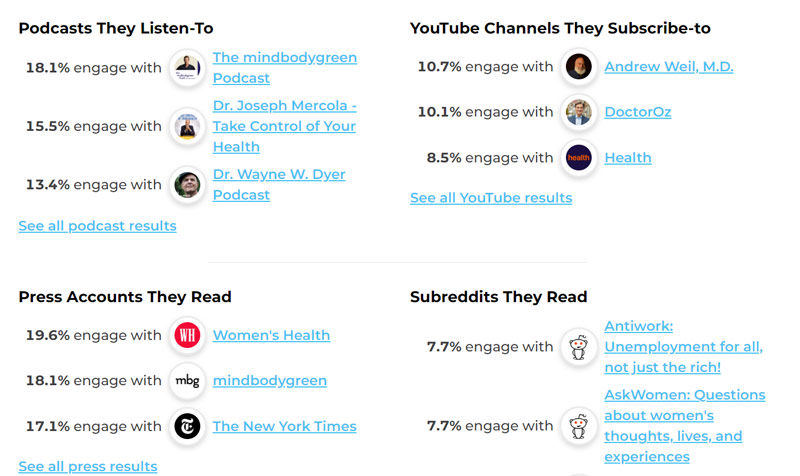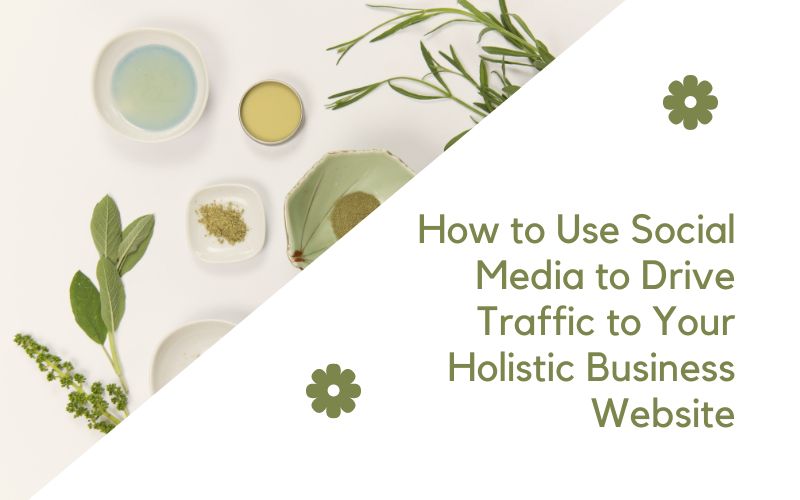Social media has become an essential tool for businesses across industries. For holistic practitioners, social media offers immense potential to drive traffic to their websites and increase brand awareness. By using social media effectively, holistic businesses can reach a wider audience, engage with their target market, and ultimately boost their website traffic.
Social media provides an opportunity for holistic businesses to connect with their target audience, share valuable information, and establish themselves as trusted authorities in the industry.
Top Social Media Strategies for Driving Traffic to Your Holistic Business Website.
Define Your Holistic Brand on Social Media
To effectively harness the power of social media, it is essential to define your holistic brand and create a strong presence on social media platforms. This involves determining your unique brand identity, choosing the right brand voice and tone, and creating consistent visual branding elements.

- Determine your unique brand identity: Start by identifying your core values, mission, and vision for your holistic business. Consider what sets you apart from your competitors and how you want to be perceived by your target audience. For example, if you offer holistic skincare products, your brand identity may revolve around promoting natural and organic ingredients, sustainability, and a commitment to overall wellness.
- Choose your brand voice and tone: Your brand voice and tone play a crucial role in shaping how your audience perceives your holistic business on social media. Decide whether you want to have a friendly and conversational tone, a professional and authoritative tone, or a combination of both. Consider the preferences and expectations of your target audience when determining your brand voice. For instance, if your holistic business focuses on yoga and mindfulness, your brand voice may be calm, soothing, and supportive.
- Create consistent visual branding: Consistency is key when it comes to defining your holistic brand on social media. This includes your visual branding elements such as your logo, color palette, typography, and imagery. Ensure that these elements align with your brand identity and are consistently used across all your social media platforms. Use colors, fonts, and imagery that reflect the values and personality of your holistic business. For example, if your holistic business promotes a peaceful and serene environment, you may choose a color palette that includes calming shades of blue and green.
- Craft compelling content that aligns with your brand: When creating content for social media, it’s important to align it with your holistic brand. Develop a content strategy that reflects your brand’s values, interests, and expertise. Share informative blog posts, inspiring quotes, behind-the-scenes glimpses, customer testimonials, and more. For instance, if your holistic business specializes in nutrition and healthy eating, you can create content that includes healthy recipes, tips for mindful eating, and information about the benefits of specific ingredients.
- Engage and build relationships with your audience: Social media is a two-way street. It’s not just about broadcasting your brand’s message, but also about engaging and building relationships with your audience. Respond to comments, messages, and mentions promptly and authentically. Show genuine interest in your audience’s opinions, questions, and concerns. By engaging with your audience, you not only build trust and loyalty but also gain valuable insights into their preferences and needs.
Video: Content Marketing for Holistic Practitioners
Identify and Connect with Your Target Audience
To drive traffic to your wellness business website using social media, it is crucial to identify and connect with your target audience effectively. By understanding your audience’s demographics, preferences, and behaviors, you can tailor your content to their needs and interests.

Here are some strategies to help you identify and connect with your target audience on social media.
- Define your target audience: Start by clearly defining your target audience. Consider their demographics, interests, and pain points. For example, if you provide yoga classes and wellness products, your target audience might include individuals who are interested in fitness, mindfulness, and natural health remedies. By understanding your audience, you can create content that resonates with them and addresses their specific needs.
- Conduct social media research: Once you have defined your target audience, conduct social media research to identify the platforms they are most active on. Different social media platforms attract different demographics. For instance, younger audiences may spend more time on platforms like Instagram and TikTok, while professionals may prefer LinkedIn. By identifying the platforms your target audience uses, you can focus your efforts on those platforms and maximize your reach.
- Use social listening tools: Social listening tools can provide valuable insights into your target audience’s preferences, needs, and conversations. These tools allow you to monitor keywords, hashtags (#), and mentions related to your industry or niche. By analyzing the data gathered, you can better understand your audience’s pain points and tailor your content to address their specific needs. For example, if you notice that your target audience frequently discusses stress management techniques, you can create content that provides tips and strategies to help them cope with stress.
- Engage with your audience consistently: Building a connection with your target audience requires consistent engagement. Respond to comments, messages, and mentions promptly and authentically. Show genuine interest in your audience’s opinions, questions, and concerns. By engaging with your audience, you not only build trust and loyalty but also gain valuable insights into their preferences and needs.
- Create relevant and valuable content: To capture the attention of your target audience on social media, it’s crucial to create content that is relevant and valuable to them. Develop a content strategy that aligns with your audience’s interests and needs. Share informative blog posts, how-to videos, inspirational quotes, and engaging visuals that resonate with your target audience. For example, if your target audience is interested in holistic nutrition, you can create content that includes healthy recipes, tips for mindful eating, and information about the benefits of specific ingredients.
- Utilize influencer marketing: Influencer marketing can be a powerful strategy to reach and connect with your target audience on social media. Identify influencers in your industry or niche who have a significant following and align with your brand values. Collaborate with these influencers to create sponsored content that promotes your holistic business. Their endorsement can help you gain credibility and expand your reach within your target audience.
Create Engaging Content that Resonates with Your Audience
Creating engaging content is essential to driving traffic to your holistic business website through social media. By understanding your audience’s preferences and needs, you can develop content that resonates with them and encourages them to visit your website. Here are some strategies for creating engaging content that resonates with your audience.
- Understand your audience: Before creating content, it’s crucial to have a clear understanding of your target audience. Who are they? What are their interests, pain points, and aspirations? Conduct thorough market research, analyze your existing customer base, and engage with your audience on social media to gain insights into their preferences and behaviors. This will help you tailor your content to their needs and interests.
- Tell compelling stories: Incorporate storytelling into your content to make it more engaging and relatable. Share personal anecdotes, case studies, or customer success stories that demonstrate the value of your holistic products or services. For example, if you’re promoting a natural skincare product, you can share a story about how it transformed someone’s skin and boosted their confidence. This creates an emotional connection and increases engagement and loyalty.
- Use visuals: Visual content, such as images, videos, and infographics, can significantly enhance the engagement of your social media posts. Posts with visuals attract more attention and are more likely to be shared. Create visually appealing graphics that align with your brand and resonate with your audience. For example, create informative infographics about the benefits of specific herbs or a video tutorial on practicing yoga at home.
- Encourage interaction: Encourage your audience to interact with your content by asking questions, running polls, or hosting contests. This boosts engagement and helps you gather valuable feedback and insights. For example, ask your audience which flavors of herbal tea they prefer or what health benefits they are looking for. This not only encourages interaction but also provides insights for future content creation and product development.
- Provide value: Your content should provide value to your audience. Whether it’s educational information, practical tips, or entertaining content, make sure it aligns with their needs and interests. For example, create content that shares healthy recipes, tips for mindful eating, or information about the benefits of different superfoods. By providing valuable content, you position yourself as an authority in your niche and build trust with your audience.
Utilize Influencer Marketing to Boost Your Holistic Business
Utilizing influencer marketing can be a powerful strategy to drive traffic to your holistic business website through social media. By collaborating with influencers who have a strong presence in the holistic health and wellness niche, you can tap into their existing audience and gain exposure to potential customers. Here are some ways you can leverage influencer marketing to boost your holistic business.
- Identify the right influencers: When selecting influencers to collaborate with, it’s essential to choose those who align with your brand values and target audience. Look for influencers who have a significant following and engage with their audience authentically. For example, if you have a holistic skincare brand, collaborating with a beauty influencer who focuses on natural and organic products would be more beneficial than partnering with a celebrity who promotes conventional cosmetics.
- Leverage user-generated content: Encourage influencers to create user-generated content (UGC) for your holistic business. UGC can include product reviews, tutorials, or testimonials from influencers who have genuinely experienced the benefits of your holistic offerings. This type of content amplifies your brand message and builds trust and credibility among your target audience. For instance, a wellness influencer could share their journey of using your holistic supplements and how it has positively impacted their well-being.
- Collaborate on exclusive promotions and giveaways: Engage influencers in exclusive promotions and giveaways to create a sense of excitement and urgency among your target audience. Offer unique discount codes or host giveaways in collaboration with influencers. This increases brand awareness, drives traffic, and encourages conversions. For example, partner with a yoga influencer to offer a limited-time discount on your holistic yoga mats, incentivizing their followers to make a purchase and try out your products.
- Host influencer-led events or workshops: In addition to online collaborations, hosting influencer-led events or workshops provides an opportunity to connect with your target audience in a more personal and immersive way. Invite renowned influencers to conduct workshops or partner with them to host events that align with your holistic business. For example, invite a fitness influencer to conduct a workshop on mindful exercising techniques or partner with a nutrition influencer to host a cooking class using your organic ingredients. These events create buzz around your holistic business and position you as an authority in your industry.
- Foster long-term relationships with influencers: While one-off collaborations can yield short-term benefits, building long-term relationships with influencers can be even more impactful for your holistic business. Nurture relationships with influencers to establish a network of trusted brand ambassadors who consistently promote your products or services. Regular collaborations with the same influencers maintain brand consistency and strengthen your overall marketing strategy. For example, work with a wellness influencer on a series of informative videos or articles, showcasing different aspects of your holistic business over an extended period.
By leveraging influencer marketing, you can tap into the existing audience of influencers and gain exposure to potential customers. Collaborating with influencers who align with your brand values and target audience helps build credibility and expand your reach within your target market.
Build a Strong Online Community through Social Media
Building a strong online community is essential for driving traffic to your holistic business website through social media. By creating a supportive and engaging environment, you can attract like-minded individuals, foster trust and loyalty, and encourage them to visit your website. Here are some strategies for building a strong online community.
- Clearly define your community’s purpose and values: Before building an online community, it’s essential to have a clear understanding of why you want to create this community and what values it aligns with. Define the purpose of your community and the values you want to promote. For example, if you run a holistic business, your community’s purpose could be to provide a supportive space for individuals interested in holistic health practices. This creates a sense of belonging and attracts like-minded individuals.
- Choose the right social media platforms: Not all social media platforms are created equal when it comes to building an online community. Choose platforms that align with your target audience and their preferences. For example, if you’re targeting a younger demographic, platforms like Instagram and TikTok may be more effective in reaching them. On the other hand, if your audience consists of professionals, LinkedIn might be the preferred platform. By selecting the right platforms, you can ensure that your community reaches the right people.
- Engage with your audience consistently: Building a strong online community requires consistent engagement. Regularly post content that resonates with your audience and sparks conversations. Respond to comments, messages, and mentions promptly and authentically. Show genuine interest in your audience’s opinions, questions, and concerns. By engaging with your audience, you build trust and loyalty, and gain valuable insights into their preferences and needs.
- Create opportunities for interaction: Encourage community members to interact with each other by creating opportunities for discussion and collaboration. For example, host live Q&A; sessions, start group discussions, or organize virtual events or challenges. This fosters a sense of community, encourages active participation, and strengthens the bonds between community members.
- Provide valuable resources and support: Offer valuable resources, such as educational content, tutorials, or expert advice, to support your community members in their holistic journey. This establishes your brand as a trusted authority and adds value to the community experience. For example, create blog posts, videos, or downloadable guides that provide in-depth information on holistic practices, wellness tips, or product recommendations.
- Moderate the community: As the community manager, it’s important to moderate the community and ensure that it remains a safe and supportive space for all members. Set clear guidelines for acceptable behavior and enforce them consistently. Address any conflicts or issues promptly and fairly. By maintaining a positive and inclusive community environment, you encourage active participation and foster a sense of belonging.
Building a strong online community through social media requires consistent engagement, clear communication, and the provision of valuable resources and support. By creating a supportive and engaging community, you can drive traffic to your holistic business website and establish long-term relationships with your target audience.
Implement Effective Social Media Advertising Strategies for Your Holistic Business
While organic reach on social media is valuable, implementing effective social media advertising strategies can significantly boost your website traffic and reach a wider audience. By investing in targeted advertisements, you can optimize your reach, engage with potential customers, and drive traffic to your holistic business website. Here are some strategies for implementing effective social media advertising strategies.
- Identify your advertising goals: Before launching social media advertising campaigns, clearly define your goals. Do you want to increase brand awareness, drive website traffic, or promote specific products or services? By identifying your goals, you can tailor your advertising strategies to achieve the desired outcomes.
- Understand your target audience: To create effective social media advertisements, it’s crucial to understand your target audience. Develop buyer personas and conduct market research to gain insights into their demographics, preferences, and behaviors. This information will help you create targeted advertisements that resonate with your audience.
- Choose the right social media platforms: Different social media platforms offer different advertising options and attract different demographics. Choose platforms that align with your target audience and advertising goals. For example, if you’re targeting a younger demographic, platforms like Instagram and TikTok may be more effective. On the other hand, if your audience consists of professionals, LinkedIn might be the preferred platform.
- Create compelling ad content: Craft compelling ad content that captures the attention of your target audience and encourages them to click through to your website. Use engaging visuals, persuasive copy, and clear calls-to-action. For example, if you sell holistic skincare products, create visually appealing images that highlight the benefits of using natural and organic ingredients.
- Target your advertisements: Social media platforms offer sophisticated targeting options that allow you to reach specific demographics, interests, and behaviors. Take advantage of these targeting options to ensure that your advertisements reach the right audience. For example, if you offer yoga classes, you can target individuals who are interested in fitness and mindfulness.
- Monitor and optimize your campaigns: Once your social media advertising campaigns are live, closely monitor their performance and make adjustments as needed. Track key metrics such as click-through rates, conversion rates, and cost per acquisition. Use this data to optimize your campaigns and improve their effectiveness over time.
Implementing effective social media advertising strategies can significantly boost your website traffic and reach a wider audience. By clearly defining your goals, understanding your target audience, choosing the right platforms, creating compelling ad content, targeting your advertisements, and monitoring their performance, you can drive traffic to your holistic business website and achieve your advertising objectives.
Measure and Analyze the Success of Your Social Media Campaigns
Measuring and analyzing the success of your social media campaigns is essential to understand the impact of your efforts and make informed decisions for future campaigns. By tracking key metrics and analyzing the data, you can gain insights into the effectiveness of your campaigns, identify areas for improvement, and optimize your strategies. Here are some steps to measure and analyze the success of your social media campaigns.
- Define your key performance indicators (KPIs): Before launching your campaigns, clearly define your KPIs. These are specific metrics that align with your campaign goals and help you evaluate success. For example, your KPIs might include website traffic, click-through rates, conversions, engagement rates, or follower growth. By identifying your KPIs, you can focus your measurement efforts and track the metrics that matter most to your holistic business.
- Track and analyze your metrics: Use social media analytics tools to track your chosen metrics and gather data on the performance of your campaigns. Most social media platforms offer built-in analytics tools that provide insights into audience demographics, engagement rates, and post performance. Additionally, you can use third-party analytics tools to gather more detailed data and cross-platform analysis. Regularly analyze your metrics to identify trends, patterns, and areas for improvement.
- Compare your results against benchmarks: To gain a better understanding of your campaign performance, compare your results against industry benchmarks or your own historical data. This allows you to assess whether your campaigns are performing above or below average and identify areas where you may need to adjust your strategies. For example, if your engagement rates are lower than industry benchmarks, you may need to refine your content or targeting.
- Gather qualitative feedback: While quantitative data provides valuable insights, gathering qualitative feedback is equally important. Engage with your audience through comments, messages, and surveys to gather feedback on their experience with your social media campaigns. Ask for their opinions, preferences, and suggestions for improvement. This feedback can provide valuable insights into what is resonating with your audience and help you refine your strategies.
- Optimize your strategies: Based on your analysis and feedback, take action to optimize your social media strategies. Make adjustments to your content, targeting, or posting frequency to improve performance. Test different approaches and monitor the impact of these changes on your metrics. Continuously refine your strategies to align with your audience’s preferences and maximize the success of your social media campaigns.
Measuring and analyzing the success of your social media campaigns allows you to gain insights into the effectiveness of your strategies and make data-driven decisions for future campaigns. By defining your KPIs, tracking and analyzing your metrics, comparing your results against benchmarks, gathering qualitative feedback, and optimizing your strategies, you can drive continuous improvement and achieve greater success in your social media marketing efforts.
Leverage User-Generated Content for Increased Brand Engagement
Leveraging user-generated content (UGC) is a powerful strategy for increasing brand engagement and driving traffic to your holistic business website. UGC refers to any content created by your audience that showcases their experiences with your products or services. By encouraging and promoting UGC, you can foster a sense of community, build trust and credibility, and increase brand visibility. Here are some ways to leverage UGC for increased brand engagement.
- Encourage your audience to share their experiences: Actively encourage your audience to share their experiences with your holistic products or services. Invite them to post reviews, testimonials, or photos on social media using a branded hashtag. Create incentives, such as contests or giveaways, to motivate your audience to participate. For example, ask your audience to share how your holistic skincare products have improved their skin and offer a chance to win a gift card or a product bundle.
- Feature UGC on your social media platforms: Regularly feature UGC on your social media platforms to showcase your audience’s experiences and reinforce your brand’s authenticity. Repost customer reviews, testimonials, or photos on your social media accounts, giving credit to the original creators. This not only demonstrates the positive impact of your products or services but also encourages others to engage with your brand and share their own experiences.
- Create UGC campaigns: Launch UGC campaigns to actively encourage your audience to participate and create content related to your holistic brand. For example, ask your audience to share their favorite holistic recipes, self-care routines, or wellness tips. Curate and share the best submissions on your social media platforms, and reward participants with exclusive discounts or special offers. UGC campaigns not only generate valuable content but also foster a sense of community and engagement.
- Share customer stories: Share compelling stories of how your holistic products or services have positively impacted your customers’ lives. Interview satisfied customers and create videos, blog posts, or case studies that highlight their experiences. This humanizes your brand, builds trust, and provides social proof of the effectiveness of your holistic offerings. For example, share the story of a customer who achieved significant weight loss through your holistic nutrition program.
- Engage with UGC creators: Engage with the creators of UGC by liking, commenting, and responding to their posts. Show appreciation for their content and take the opportunity to address any questions or concerns. This interaction not only encourages further engagement but also strengthens the relationship between your brand and your audience. Additionally, consider collaborating with UGC creators on future campaigns or offering them exclusive perks or discounts.
- Incorporate UGC into your website: Showcase UGC on your holistic business website to provide social proof and increase engagement. Create a dedicated section on your website to feature customer testimonials, reviews, or photos. This allows potential customers to see real-life examples of how your products or services have benefited others. Additionally, consider integrating UGC into your product pages to provide an interactive and engaging experience for visitors.
Leveraging user-generated content is a powerful strategy for increasing brand engagement and driving traffic to your holistic business website. By encouraging your audience to share their experiences, featuring UGC on your social media platforms, launching UGC campaigns, sharing customer stories, engaging with UGC creators, and incorporating UGC into your website, you can foster a sense of community, build trust, and provide social proof of the effectiveness of your holistic offerings.
Build Trust and Credibility through Social Media for Your Holistic Business
Building trust and credibility is crucial for driving traffic to your holistic business website through social media. By establishing your brand as a trusted authority in the industry, you can attract and retain loyal customers. When you share valuable and accurate information related to your practice, you will gain followers who will continue to return to your website knowing that this information can be trusted.
Conclusion
Social media is a critical marketing tool for holistic practitioners allowing them to grow their online presence and drive traffic to their websites. By implementing effective strategies, businesses in the holistic health and wellness industry can leverage the power of social media to connect with a broader audience, engage with potential clients, and ultimately boost website traffic.






